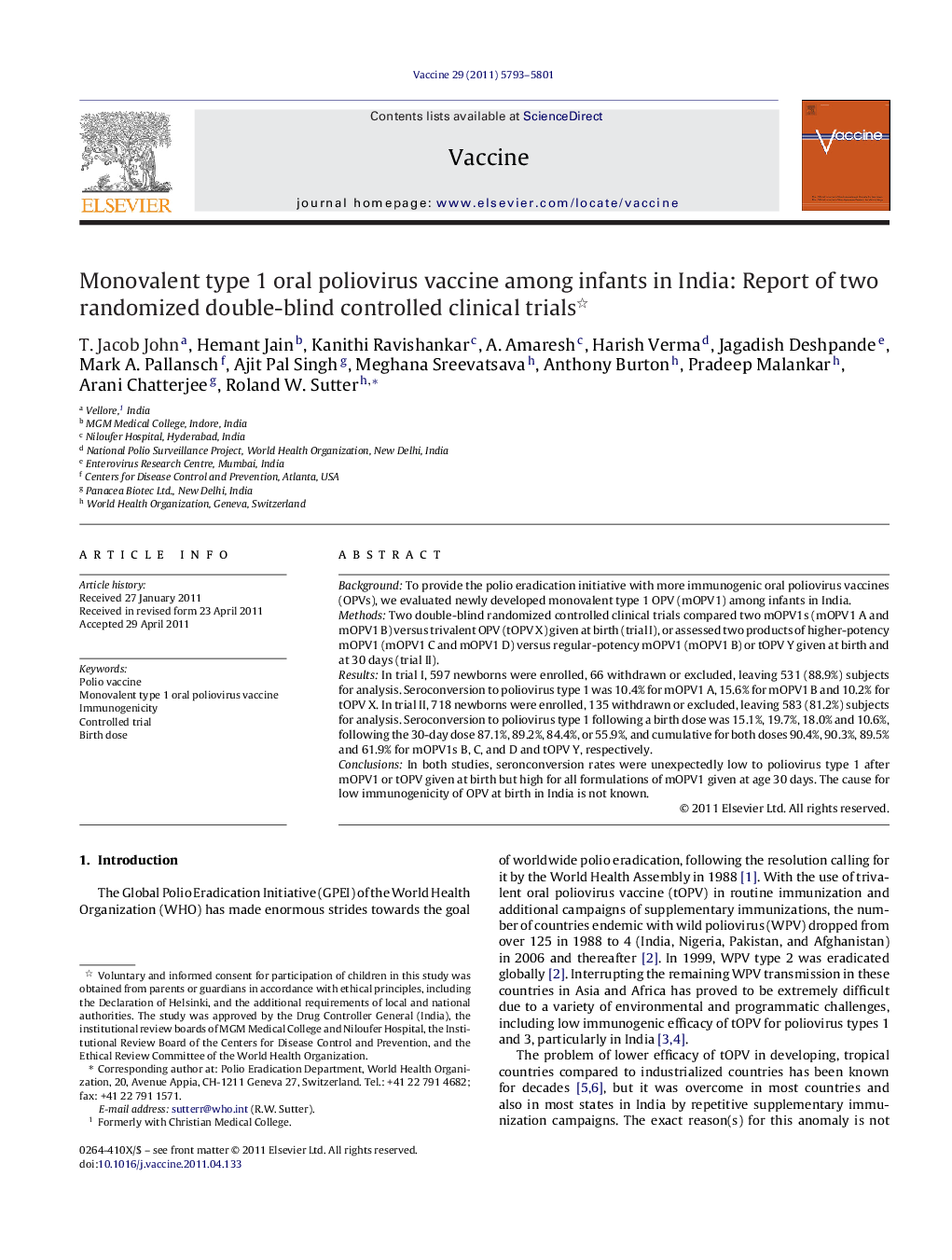| Article ID | Journal | Published Year | Pages | File Type |
|---|---|---|---|---|
| 2403278 | Vaccine | 2011 | 9 Pages |
BackgroundTo provide the polio eradication initiative with more immunogenic oral poliovirus vaccines (OPVs), we evaluated newly developed monovalent type 1 OPV (mOPV1) among infants in India.MethodsTwo double-blind randomized controlled clinical trials compared two mOPV1s (mOPV1 A and mOPV1 B) versus trivalent OPV (tOPV X) given at birth (trial I), or assessed two products of higher-potency mOPV1 (mOPV1 C and mOPV1 D) versus regular-potency mOPV1 (mOPV1 B) or tOPV Y given at birth and at 30 days (trial II).ResultsIn trial I, 597 newborns were enrolled, 66 withdrawn or excluded, leaving 531 (88.9%) subjects for analysis. Seroconversion to poliovirus type 1 was 10.4% for mOPV1 A, 15.6% for mOPV1 B and 10.2% for tOPV X. In trial II, 718 newborns were enrolled, 135 withdrawn or excluded, leaving 583 (81.2%) subjects for analysis. Seroconversion to poliovirus type 1 following a birth dose was 15.1%, 19.7%, 18.0% and 10.6%, following the 30-day dose 87.1%, 89.2%, 84.4%, or 55.9%, and cumulative for both doses 90.4%, 90.3%, 89.5% and 61.9% for mOPV1s B, C, and D and tOPV Y, respectively.ConclusionsIn both studies, seronconversion rates were unexpectedly low to poliovirus type 1 after mOPV1 or tOPV given at birth but high for all formulations of mOPV1 given at age 30 days. The cause for low immunogenicity of OPV at birth in India is not known.
► Study demonstrated the superiority of monovalent type 1 oral poliovirus vaccine (mOPV1) over trivalent oral poliovirus vaccine (tOPV) when given at age 30 days to Indian infants. ► Study showed that mOPV1 and tOPV vaccines have low immunogenicity in Indian newborns when given shortly after birth. ► Study also suggested that higher-potency mOPV1 vaccines were not more immunogenic than regular-potency mOPV1 vaccines.
